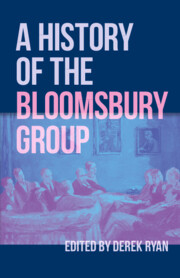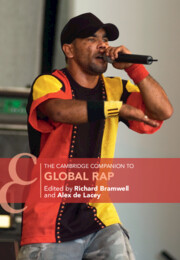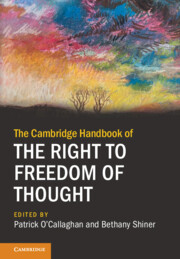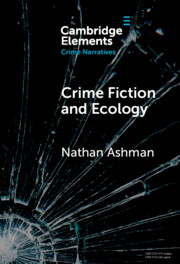Refine search
Actions for selected content:
201 results
Introduction
-
-
- Book:
- The Cambridge Companion to British Literature and Empire
- Published online:
- 20 November 2025
- Print publication:
- 04 December 2025, pp 1-16
-
- Chapter
- Export citation
Chapter 1 - An Introduction to and Summary of Global Perspectives from Twenty-Three Countries on the Definition, Assessment, and Reduction of Bias and Unfairness in Employment Testing
-
-
- Book:
- Global Perspectives on the Definition, Assessment, and Reduction of Bias and Unfairness in Employment Testing
- Published online:
- 04 November 2025
- Print publication:
- 20 November 2025, pp 1-43
-
- Chapter
- Export citation
1 - Introduction
-
-
- Book:
- Human Rights in the Digital Domain
- Published online:
- 24 October 2025
- Print publication:
- 13 November 2025, pp 1-8
-
- Chapter
-
- You have access
- Open access
- HTML
- Export citation

A History of the Bloomsbury Group
-
- Published online:
- 09 October 2025
- Print publication:
- 23 October 2025
17 - English Rap in India and the Fault Lines of Sociolinguistic Politics
- from Part IV - Contexts for Rap
-
-
- Book:
- The Cambridge Companion to Global Rap
- Published online:
- 25 July 2025
- Print publication:
- 14 August 2025, pp 249-260
-
- Chapter
- Export citation
23 - The wars of the French Republic and the Napoleonic Wars, 1789–1815
-
-
- Book:
- The Cambridge History of War
- Published online:
- 18 July 2025
- Print publication:
- 14 August 2025, pp 552-572
-
- Chapter
- Export citation

The Cambridge Companion to Global Rap
-
- Published online:
- 25 July 2025
- Print publication:
- 14 August 2025
2 - Stereotyped Knowledge
-
- Book:
- Selling Sexual Knowledge
- Published online:
- 24 June 2025
- Print publication:
- 10 July 2025, pp 57-89
-
- Chapter
-
- You have access
- Open access
- HTML
- Export citation
Rapid Communication: The Fate of Global Humanitarian Assistance Amidst Growing Health Challenges
-
- Journal:
- Disaster Medicine and Public Health Preparedness / Volume 19 / 2025
- Published online by Cambridge University Press:
- 27 June 2025, e167
-
- Article
-
- You have access
- Open access
- HTML
- Export citation
Data for peace: how novel data sources and technology can enhance peace?
- Part of
-
- Journal:
- Data & Policy / Volume 7 / 2025
- Published online by Cambridge University Press:
- 27 June 2025, e45
-
- Article
-
- You have access
- Open access
- HTML
- Export citation
“Para hacer una buena canoa”: Conocimiento náutico maya registrado en los “Discursos de Fray Gabriel De Salazar” de 1620
-
- Journal:
- Latin American Antiquity / Volume 36 / Issue 2 / June 2025
- Published online by Cambridge University Press:
- 08 August 2025, pp. 339-359
- Print publication:
- June 2025
-
- Article
- Export citation
Chapter 13 - Translocality and Translocalism
- from Part II - Developments
-
-
- Book:
- Space and Literary Studies
- Published online:
- 07 May 2025
- Print publication:
- 22 May 2025, pp 216-233
-
- Chapter
- Export citation

The Cambridge Handbook of the Right to Freedom of Thought
-
- Published online:
- 06 March 2025
- Print publication:
- 13 March 2025
Reflection on the Legacy of Lawrence Gostin in Global Health
-
- Journal:
- Journal of Law, Medicine & Ethics / Volume 53 / Issue S1 / Spring 2025
- Published online by Cambridge University Press:
- 14 April 2025, p. 1
- Print publication:
- Spring 2025
-
- Article
-
- You have access
- Open access
- HTML
- Export citation
2 - Biomass
-
-
- Book:
- Bioprocesses
- Published online:
- 24 January 2025
- Print publication:
- 13 February 2025, pp 8-81
-
- Chapter
- Export citation
1 - Introduction
-
-
- Book:
- Defeating Disinformation
- Published online:
- 30 January 2025
- Print publication:
- 06 February 2025, pp 1-6
-
- Chapter
-
- You have access
- Open access
- HTML
- Export citation
An overview of dairy production in selected African and Asian countries: challenges and opportunities for sustainability
-
- Journal:
- Journal of Dairy Research / Volume 92 / Issue 1 / February 2025
- Published online by Cambridge University Press:
- 18 August 2025, pp. 81-88
- Print publication:
- February 2025
-
- Article
-
- You have access
- Open access
- HTML
- Export citation

Crime Fiction and Ecology
- From the Local to the Global
-
- Published online:
- 14 January 2025
- Print publication:
- 30 January 2025
-
- Element
- Export citation
Chapter 4 - Poetry of Place and Planet
-
- Book:
- The Environmental Poetry of Augustan Rome
- Published online:
- 12 December 2024
- Print publication:
- 19 December 2024, pp 146-179
-
- Chapter
- Export citation
Global distribution and gap analysis of equine housing research: The findings so far and where to go next
-
- Journal:
- Animal Welfare / Volume 33 / 2024
- Published online by Cambridge University Press:
- 11 December 2024, e58
-
- Article
-
- You have access
- Open access
- HTML
- Export citation
